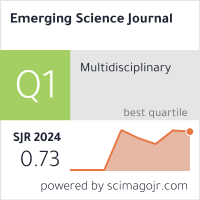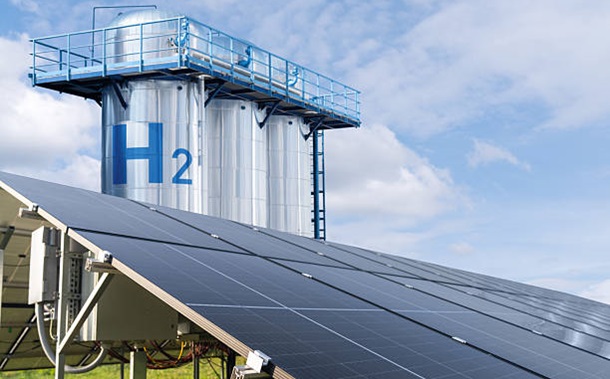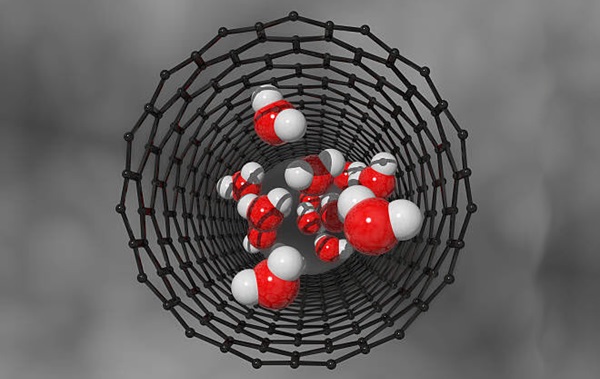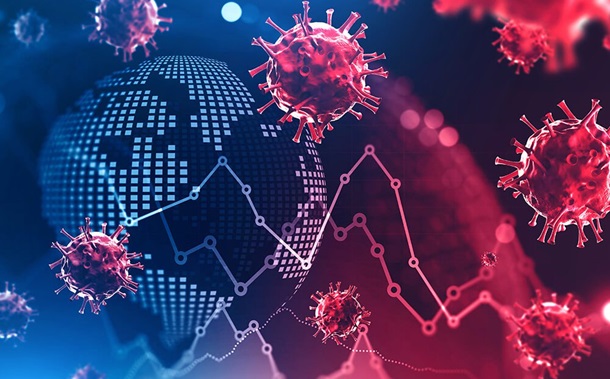Adopting TOGAF Framework for Sustainable and Scalable Robusta Coffee Leaf Rust Management
Downloads
Robusta coffee (Coffea canephora) is a globally significant crop. However, managing Coffee Leaf Rust remains challenging due to the reliance on manual detection methods and the lack of structured technological integration. This study proposes a TOGAF-based framework as a scalable and adaptable solution for structuring Coffee Leaf Rust management strategies. The framework leverages enterprise architecture principles to integrate learning algorithms, image detection, and systematic plantation mapping within a structured approach that enhances data organization, rust severity visualization, and predictive analysis. The proposed framework provides a strategic roadmap for integrating technology into Coffee Leaf Rust detection and management by focusing on modularity, scalability, and stakeholder engagement. Unlike existing ad-hoc approaches, this framework is a foundation for future technology-driven solutions, balancing manual practices with structured digital adoption. As no prior research has combined TOGAF with agricultural disease management, this study presents a novel conceptual contribution that could guide future developments in smart agriculture. By adopting this framework, the Robusta coffee industry can move toward proactive, data-driven Coffee Leaf Rust management, fostering long-term resilience and productivity.
Downloads
[1] Vieira, H. D. (2008). Coffee: The plant and its cultivation. Plant-Parasitic Nematodes of Coffee, 3–18. doi:10.1007/978-1-4020-8720-2_1.
[2] Allen, L. (2023). 2022 coffee statistics: Consumption, purchases, and preferences. Drive Research. Available online: https://www.driveresearch.com/market-research-company-blog/coffee-survey/ (accessed on May 2025).
[3] Davis, A. P., Chadburn, H., Moat, J., O’Sullivan, R., Hargreaves, S., & Nic Lughadha, E. (2019). High extinction risk for wild coffee species and implications for coffee sector sustainability. Science Advances, 5(1), eaav3473. doi:10.1126/sciadv.aav3473.
[4] ICO. (2021). Trade Statistics Tables (2021). International Coffee Organization, ICO. Available online: https://ico.org/resources/trade-statistics-tables/ (accessed on May 2025).
[5] Camargo, M. B. P. de. (2010). The impact of climatic variability and climate change on arabica coffee crop in Brazil. Bragantia, 69(1), 239–247. doi:10.1590/s0006-87052010000100030.
[6] Avelino, J., et al. (2023). Tree effects on coffee leaf rust at field and landscape scales. Plant Disease, 107(2), 247–261. doi:10.1094/pdis-08-21-1804-fe.
[7] McCook, S., & Vandermeer, J. (2015). The Big Rust and the Red Queen: Long-term perspectives on coffee rust research. Phytopathology, 105(9), 1164–1173. doi:10.1094/phyto-04-15-0085-rvw.
[8] Avelino, J., et al. (2015). The coffee rust crises in Colombia and Central America (2008–2013): Impacts, plausible causes, and proposed solutions. Food Security, 7(2), 303–321. doi:10.1007/s12571-015-0446-9.
[9] Ramírez-Camejo, L. A., Keith, L. M., Matsumoto, T., Sugiyama, L., Fukada, M., Brann, M., Moffitt, A., Liu, J., & Aime, M. C. (2022). Coffee leaf rust (Hemileia vastatrix) from the recent invasion into Hawaii shares a genotypic relationship with Latin American populations. Journal of Fungi, 8(2), 189. doi:10.3390/jof8020189.
[10] Harmiansyah, N., Diptaningsari, D., Wardani, N., Meidaliyantisyah, N., Mawardi, R., & Hendra, J. (2023). Intensity of leaf rust disease on four robusta coffee clones in Natar, South Lampung. IOP Conference Series: Earth and Environmental Science, 1230(1), 012097. doi:10.1088/1755-1315/1230/1/012097.
[11] Bardner, R. (1978). Pest control in coffee. Pesticide Science, 9(5), 458–464. doi:10.1002/ps.2780090513.
[12] Phan, V. H. (2017). Research results on robusta coffee breeding in Vietnam. Vietnam Journal of Science, Technology and Engineering, 59(4), 37–41. doi:10.31276/vjste.59(4).37.
[13] Ploetz, R. C. (2007). Diseases of tropical perennial crops: Challenging problems in diverse environments. Plant Disease, 91(6), 644–663. doi:10.1094/pdis-91-6-0644.
[14] Nawaz, M., Nazir, T., Javed, A., Amin, S. T., Jeribi, F., & Tahir, A. (2024). CoffeeNet: A deep learning approach for coffee plant leaves diseases recognition. Expert Systems with Applications, 237, 121481. doi:10.1016/j.eswa.2023.121481.
[15] Elyasir, A. M. H., & Anbananthen, K. S. M. (2012). Focused web crawler. In Proceedings of International Conference on Information and Knowledge Management, IPCSIT, 45, 149–153.
[16] Rodriguez-Gallo, Y., Escobar-Benitez, B., & Rodriguez-Lainez, J. (2023). Robust coffee rust detection using UAV-based aerial RGB imagery. AgriEngineering, 5(3), 1415–1431. doi:10.3390/agriengineering5030088.
[17] Simon, K. S., Anbananthen, K. S. M., & Lee, S. (2013). A ubiquitous personal health record (uPHR) framework. In Proceedings of the 2013 International Conference on Advanced Computer Science and Electronics Information (ICACSEI 2013), 105. doi:10.2991/icacsei.2013.105.
[18] Akter, R., Doan, V., Tunze, G. B., Lee, J., & Kim, D. (2020). RF-based UAV surveillance system: A sequential convolution neural networks approach. In 2020 International Conference on Information and Communication Technology Convergence (ICTC), 9289281. doi:10.1109/ictc49870.2020.9289281.
[19] Anbananthen, K. S. M., Muthaiyah, S., Thiyagarajan, S., Balasubramaniam, B., Bin Yousif, Y., Mohammad, S., & Kalid, K. S. (2024). Evaluating Enterprise Architecture Frameworks for Digital Transformation in Agriculture. Journal of Human, Earth, and Future, 5(4), 761–772. doi:10.28991/hef-2024-05-04-015.
[20] Zambolim, L. (2016). Current status and management of coffee leaf rust in Brazil. Tropical Plant Pathology, 41(1), 1–8. doi:10.1007/s40858-016-0065-9.
[21] Aristizábal, L. F., & Johnson, M. A. (2022). Monitoring coffee leaf rust (Hemileia vastatrix) on commercial coffee farms in Hawaii: Early insights from the first year of disease incursion. Agronomy, 12(5), 1134. doi:10.3390/agronomy12051134.
[22] Soares, M., Armando, I., Portugal, I., & Silva, C. A. (2017). Emerging technologies for the recovery of valuable compounds from coffee processing by-products. In Emerging Technologies in Coffee Processing, 141–169. doi:10.1016/b978-0-12-811290-8.00005-0.
[23] Vega, F. E., Infante, F., & Johnson, A. J. (2015). The genus Hypothenemus, with emphasis on H. hampei, the coffee berry borer. Bark Beetles, 427–494. doi:10.1016/b978-0-12-417156-5.00011-3.
[24] Arneson, P. A. (2000). Coffee rust. The Plant Health Instructor, Minnesota, United States. doi:10.1094/PHI-I-2000-0718-02.
[25] Anbananthen, K. S. M., Sai Narayanan, G., Chekima, A., & Teo, J. (2007). Artificial neural network tree approach in data mining. Malaysian Journal of Computer Science, 20(1), 51–62. doi:10.22452/mjcs.vol20no1.5.
[26] Wiseman, L., Sanderson, J., Zhang, A., & Jakku, E. (2019). Farmers and their data: An examination of farmers’ reluctance to share their data through the lens of the laws impacting smart farming. NJAS - Wageningen Journal of Life Sciences, 90–91, 100301. doi:10.1016/j.njas.2019.04.007.
[27] Basavaraj, B., & Annapoorna, M. S. (2023). Agricultural technology adoption by marginal and small farmers in Karnataka. Modern Technology Solutions, Chennai, India. doi:10.47716/MTS.B.978-93-92090-19-6.
[28] Velásquez, D., Sánchez, A., Sarmiento, S., Toro, M., Maiza, M., & Sierra, B. (2020). A method for detecting coffee leaf rust through wireless sensor networks, remote sensing, and deep learning: Case study of the Caturra variety in Colombia. Applied Sciences, 10(2), 697. doi:10.3390/app10020697.
[29] Trujillo, J. L. (2023). Technologies applied in the early detection of coffee rust fungus diseases: A review. Transactions of the Chinese Society of Agricultural Machinery. Transactions of the Chinese Society of Agricultural Machinery, 54(5), 1-16.
[30] Lelis, A. K., Gethresito, E., Vallesteros, K. M. A., & Aldwayne, J. (2023). A comparative analysis of convolutional neural network architectures for coffee leaf rust detection. Proceedings of the IEEE International Conference on Advances in Computing and Information Systems, 213–218. doi:10.1109/i2cacis57635.2023.10193074.
[31] Jayashree, N. A., Suresh, N., & Raaga, R. N. (2024). Advancing coffee leaf rust disease management: A deep learning approach for accurate detection and classification using convolutional neural networks. Journal of Experimental Agriculture International, 46(2), 108–118. doi:10.9734/jeai/2024/v46i22313.
[32] Khan, S. U., & van Gulijk, C. (2018). Safety enterprise architecture approach for a railway safety management system. CRC Press eBooks, 3099–3105. doi:10.1201/9781351174664-388.
[33] The Open Group. (2024). The Open Group announces launch of the TOGAF® standard, 10th edition. The Open Group. Available online: https://www.opengroup.org/open-group-announces-launch-togaf-standard-10th-edition (accessed on May 2025).
[34] Virginio, E., & Astorga, C. (2015). Prevention and control of coffee rust: Manual of good practices for technicians and facilitators. Tropical Agricultural Research and Higher Education Center (CATIE), Costa Rica.
[35] Harwood, C. E. (1998). Grevillea robusta: A versatile and popular tree for farm forestry. Winrock International (WI), Arkansas, United States. Available online: https://winrock.org/grevillea-robusta-a-versatile-and-popular-tree-for-farm-forestry/#:~:text=It%20is%20commonly%20planted%20as,at%202%E2%80%932.5 (accessed on May 2025).
[36] Perfecto, I. (2020). Coffee rust spreads together with coffee plantations. Feral Atlas, Stanford University Press. Available online: https://feralatlas.supdigital.org/poster/coffee-rust-spreads-together-with-coffee-plantations (accessed on May 2025).
- This work (including HTML and PDF Files) is licensed under a Creative Commons Attribution 4.0 International License.




















